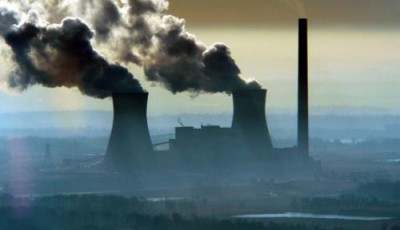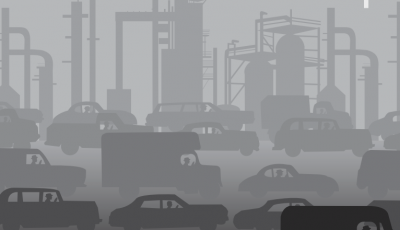Offsetting or Offputting – Where the Kyoto Protocol went very wrong

UN officials have confirmed the findings by the Stockholm Environment Institute that around 600 million tonnes of carbon were wrongly emitted as a result, under the UNFCCC’s Joint Implementation (JI) scheme.
The first in-depth review of JI’s environmental integrity shows about three-quarters of credits may not represent actual emission reductions, and their use to meet mitigation targets may have increased emissions by about 600 million tonnes.
The findings are directly relevant to ongoing UN climate talks.
Joint Implementation is one of two offsetting mechanisms under the Kyoto Protocol, along with the Clean Development Mechanism.
It enables countries with emission reduction commitments under the Kyoto Protocol to generate Emission Reduction Units (ERUs) from greenhouse gas reduction projects and transfer them to other countries.
As of March 2015, almost 872 million ERUs had been issued under JI. But while JI is meant to support climate change mitigation by making it more cost-effective, a new SEI study shows that it seriously undermined global climate action.
In a random sample of 60 JI projects, 73% of the offsets came from projects for which additionality was not plausible – that is, the projects would likely have proceeded even without carbon revenues.
The study also examined the six largest project types across JI, and found only one, N2O abatement from nitric acid production, had overall high environmental integrity – meaning the projects were likely to be truly additional and not over credited.
Altogether, the study found that about 80% of ERUs issued came from project types of low or questionable environmental integrity. The design of JI is meant to safeguard against non-additional projects: Host countries must cancel one of their emission allowances for every ERU issued.
A senior UN official speaking on condition of anonymity was quoted in The Guardian that the new SEI report was “thoroughly researched and probably correct.”
JI had been beset by “significant criminal energy” in Russia and Ukraine, after the EU banned the trading of credits from an industrial gas scam on the Emissions Trading System (ETS) from April 2013, he explained. This led to a flood of what he called “almost completely bogus” credits in 2012.
But the study found more than 95% of ERUs were issued by countries with significant surpluses of allowances. If those countries issued non-additional ERUs, they would not have to make up the difference by further reducing emissions at home.
Thus, ERUs worth about 600 Mt CO2e issued as of March 2015 may not represent actual emission reductions.
“The implications are particularly serious for the EU Emissions Trading System,” says Anja Kollmuss, an SEI associate who led the study.
“Almost two-thirds of JI credits were used in the EU ETS, so the poor overall quality of JI projects may have undermined the EU’s emission reduction target by some 400 Mt CO2e.
For context, that is about a third of the emission reductions required by the EU ETS from 2013 to 2020.”
In a separate article published in Nature Climate Change, the SEI authors focus on “perverse effects” of JI on projects in Russia to reduce waste gas emissions of HFC-23 and SF6, two potent greenhouse gases. In 2011, the operators of three chemical plants removed methodological safeguards and increased production of those gases to unprecedented levels, thus earning more credits.
“If you produced more greenhouse gases only to destroy them and generate more carbon credits, you would essentially be damaging the climate for profit,” says Lambert Schneider, an SEI associate and co-author of the study.
Ukraine and Russia have hosted the largest share of JI projects overall, together issuing 90% of ERUs. Projects in both countries raise significant environmental integrity questions – particularly the most common project types: prevention of coal waste pile fires in Ukraine and utilization of gas produced in petroleum operations in Russia.
The study found that for both project types, additionality is not plausible, over crediting is likely significant, and emission reduction estimates are inconsistent with national inventories.
“This was like printing money!”
“Some early JI projects were of good quality, but in 2011–2012, numerous projects were registered in Ukraine and Russia which had started long before and were clearly not motivated by carbon credits,” says Vladyslav Zhezherin, an independent consultant in Ukraine and co-author of the study.
“This was like printing money.” The massive issuance of questionable credits towards the end of the first Kyoto commitment period also contributed to the collapse of credit prices.
“This means legitimate carbon projects that really required carbon revenues to be viable may have been harmed by these schemes,” says Schneider.
This is the first in-depth review of the environmental integrity of JI. The analysis is timely, as it can directly inform ongoing discussions about carbon markets, especially in the context of negotiations for a new global climate agreement under the United Nations Framework Convention on Climate Change (UNFCCC).
Drawing on lessons from JI, the study offers several recommendations for the UN climate talks. In particular, it highlights the need to ensure that countries’ pledges under the new climate agreement are truly ambitious, and to establish international accounting rules and robust oversight of international transfers of carbon units, so the problems that have arisen with JI are not repeated under a new climate regime.
The main study is available at http://www.sei-international.org/publications?pid=2803.
For a policy brief summarizing the findings, see: http://www.sei-international.org/publications?pid=2802.
The Nature Climate Change article is available at: http://dx.doi.org/10.1038/nclimate2772.







